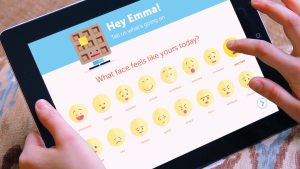
Photo by Marc-Olivier Jodoin on Unsplash
The thing I like most about education is that it is a process of personal evolution. It can be easy to settle into patterns in your career and life, but education introduces turbulence to a stagnant pool. Each new thought or bit of information that flows into the pool disrupts the surface a little bit. The reflection of myself that I see now is necessarily different from what I saw at the beginning of this course. I have new ripples on the surface that give me a different perspective and hint at the depth of my learning.
Interactive and Multimedia Learning Theories has been an interesting class and initiated a thought-provoking journey into my inquiry topic. It also provided background information and skills that will enable me to become a more efficient researcher and effective practitioner. Indeed, the creation of this blog has facilitated not just the dissemination of my learning, but enabled me to track and explore it, as well as relate it to my practice. In each post rather than just dumping a bunch of academic research, I was able to reflect on the content and my experience. This has helped keep my learning relevant since it is so easy to slide down interesting academic rabbit-holes.
Early on in the course I was introduced to the concept of digital literacy which, combined with media literacy, are critical skill-sets for the connected citizen. By being aware of them, I am able to be a more responsible and critical consumer (and creator) of content. Since I am an educator, I need to be aware of how my use of digital technologies affects and influences others as well as myself.
As this was my first online course, and the content was fairly self-directed, I was a bit apprehensive about my ability to stay on task and not get lost in my own little research world. The regular online face-to-face meetings and my learning pod made me feel like part of a community which greatly alleviated my fears and kept me connected to my peers. In fact my learning pod was so helpful that my colleagues at Entangled Curiosities, Littles in the Forrest, and Children’s Stories and I decided to keep meeting online for the duration of the program, if not longer, to break down our learning and to network.
As far as writing goes, I have always felt that it was my strong suit. However, I have relied a fair bit on my printer and my memory in compiling research papers throughout my academic career. Zotero though, is a game-changer. I tried out this citation manager for my final paper this term and it was quite a different process. I didn’t print a single article, I didn’t laboriously type out the entire reference list, and it was amazing! I will definitely use it throughout this program and beyond. I also have already started using it to organize articles that I use in my practice or that I may find useful later on. Being able to find the article I am looking for and extract the juicy bits is a whole new level of organization for me.
The tools, networks, and skills I learned greatly facilitated my research. By drawing from my practice with infants, conversing with my learning pod, and engaging with the blogs of my colleagues, I eventually settled on a research topic: how infants are socialized to understand mobile devices. I had started digging into the literature on infant development and digital technologies, but it didn’t quite feel like a juicy enough topic. Besides, there was a fair bit of research that said similar things: infants aren’t developmentally able to benefit from screens, and they need face-to-face interaction to learn. These articles also talked about how children’s screen/tech use tended to mirror their parents’ use. Then I found a link in laucoo’s blog that referenced role modelling tech etiquette. This was the smoking gun. I could tie together infant’s innate ability to learn from others, role modelling, and adult’s use of tech. By marrying these topics, I was able to examine how infants are socialized to understand mobile device use and make recommendations for parents and practitioners. Basically, we as adults need to be cognizant of our influence on tiny minds and exhibit desirable tech etiquette, as well as ensure that our devices don’t displace valuable face-to-face connections with our little charges.
The feedback I received for my paper was that it was fascinating, if a bit scary. The idea that adults are socializing infants to understand that mobile devices are often more important to us than interacting with them is not a comfortable thought. One thing I mentioned, but could have devoted more time to, was that mindfulness and moderation are key, and nobody is trying to be a bad parent or role model. This paper wasn’t intended to judge anyone, but to highlight some information so that we can tweak our behaviour to better meet our desired outcomes: well-adjusted babies.
So when I look into the pool now, I see myself differently. I see someone who recognizes the importance of mindfully using modern technologies. I am more cognizant of how the little things I do around infants can contribute to their growing understanding of how people operate in the world, whether it is my intention or not. I am a more efficient researcher, and more mindful of my connections and networks with other practitioners. We can keep disrupting each others’ pools for a long time to come.






Recent Comments